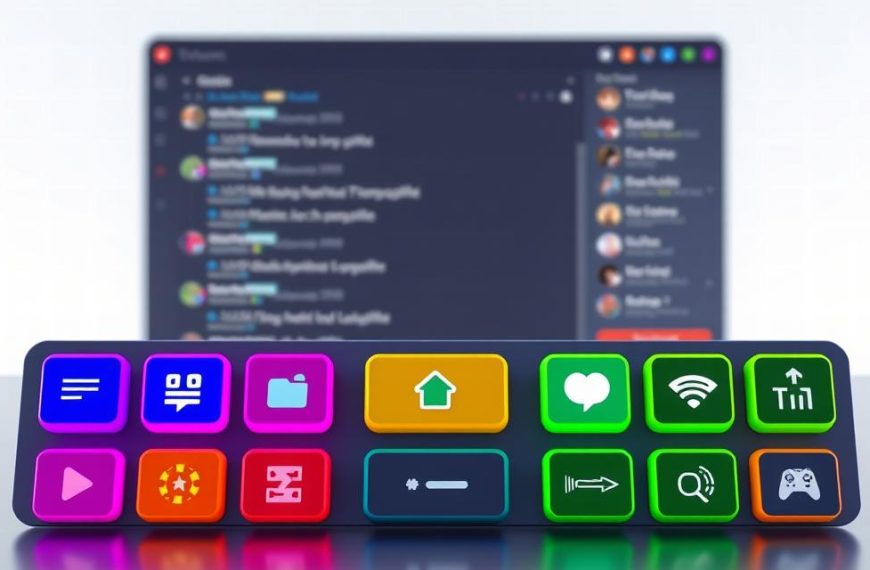Modern consumers demand instant responses. Recent data shows 53% of Britons consider long wait times the most frustrating aspect of customer service. With 62% preferring automated assistants over human agents after just 15 minutes, businesses must adapt to survive.
The pandemic accelerated this shift dramatically. Companies relying on traditional communication methods struggled, while those using conversational interfaces thrived. Today, 69% of UK consumers report satisfaction with their latest bot interactions – a testament to advancing technology.
These tools now handle complex tasks effortlessly, from answering routine queries to generating qualified leads. What once required coding expertise has transformed through no-code platforms. Even small enterprises can create sophisticated systems without technical teams.
Industry forecasts reinforce this trend. A CWW Market Study reveals 84% of British businesses anticipate chatbots becoming central to customer communications. This evolution reflects changing expectations in our fast-paced digital economy.
Our guide simplifies the development process. We’ll explore platform selection, conversation design principles, and integration strategies. You’ll learn to implement solutions that reduce wait times while maintaining that crucial human touch.
Introduction to Chatbots on Modern Websites
Digital interactions now set the pace for customer expectations. Nearly three-quarters of UK consumers abandon brands after poor service experiences. This reality makes intelligent conversational tools essential for maintaining competitive advantage.
Rising Importance in Digital Marketing
Marketing strategies increasingly prioritise real-time engagement. Research shows 58% of British shoppers prefer messaging brands directly through websites rather than email. Chatbots fill this gap, offering instant dialogue that keeps visitors engaged.
The pandemic accelerated adoption rates dramatically. Retailers using automated assistants saw 41% higher customer retention during lockdowns. These tools now handle complex tasks like:
- Qualifying sales leads within seconds
- Personalising product suggestions
- Resolving common service issues
Benefits for Businesses and Customers
Organisations gain 24/7 support capabilities without staffing costs. A single chatbot manages hundreds of simultaneous conversations – impossible for human teams. For clients, immediate responses reduce frustration and build trust.
Recent surveys highlight dual advantages:
- 68% of UK businesses report reduced operational costs
- 74% of consumers appreciate faster query resolution
This synergy between efficiency and satisfaction drives chatbot integration across sectors. From banking to e-commerce, automated assistants reshape how companies connect with their audience.
Understanding the Basics of Chatbot Development
Creating intelligent conversational tools requires mastery of core technologies powering modern automated systems. These solutions combine language analysis, adaptive learning, and seamless integration with business operations to deliver meaningful interactions.
Key Concepts: NLP, Machine Learning and Automation
Natural Language Processing (NLP) enables bots to interpret varied phrasings by detecting user intent. This technology identifies critical elements like product names or locations within messages, forming the foundation for relevant responses.
Machine learning algorithms refine accuracy through continuous data analysis. They adapt conversation patterns based on successful interactions, improving performance without manual intervention.
Automation transforms basic bots into operational assets. Integration with CRM systems and databases allows actions like order tracking or meeting scheduling. This connectivity turns conversational tools into productivity multipliers.
Role of No-Code Platforms in Simplifying Development
Leading platforms like Voiceflow and Landbot have democratised bot creation. Visual interfaces replace complex coding, enabling marketing teams to design sophisticated workflows through drag-and-drop components.
These solutions offer:
- Pre-built templates for common use cases
- Real-time collaboration features
- Direct API connections
By removing technical barriers, businesses prototype and deploy functional chatbots within days rather than months. This accessibility drives adoption across UK enterprises seeking cost-effective customer engagement solutions.
How to build chatbot for a website: Planning and Preparation
Successful implementation begins with meticulous groundwork. Organisations must audit their digital assets to create intelligent systems that mirror their operational DNA. This phase determines whether your solution becomes an asset or a liability.
Analysing Your Website and Content Sources
Start by mapping information ecosystems. Prioritise pages receiving high traffic or containing critical service details. Most platforms allow selective scanning through toggle controls – exclude outdated product categories or seasonal promotions.
Essential resources include:
| Source Type | Data Format | Training Priority | Integration Complexity |
|---|---|---|---|
| FAQ Sections | Structured Q&A | High | Low |
| Knowledge Bases | Articles | Medium | Medium |
| Internal Docs | PDF/Text | Variable | High |
Defining Objectives and Use Cases
Align automation goals with measurable outcomes. Retailers might prioritise basket recovery, while service firms focus on appointment management. Document three core scenarios your system must handle flawlessly.
Common UK use cases involve:
- Resolving delivery timeline queries
- Processing returns/exchanges
- Recommending complementary products
Establish escalation protocols early. Specify when conversations transfer to human agents, ensuring seamless handovers during complex enquiries.
Training Your Chatbot with AI and No-Code Tools
Transform raw data into meaningful dialogues through intelligent system training. This phase determines whether your automated assistant becomes a trusted resource or a digital liability.
Customising Welcome Messages and Flow Setup
First impressions matter. Your opening message should clarify capabilities while reflecting brand values. Combine clear text with visual elements like buttons or videos to boost engagement.
Effective flows guide users naturally. Map common scenarios like delivery queries or returns. Ensure smooth transitions between topics using no-code interfaces. Test different conversation paths to eliminate dead ends.
Utilising Resources and Editable Text for AI Knowledge
Feed your system diverse content sources. FAQ sections and product databases form the foundation. Modern platforms automatically generate skills for pricing or contact procedures.
Refine responses through editable text fields. Adjust tone to match customer expectations – formal for financial services, conversational for retail. Continuous updates keep knowledge current without coding.
This approach lets businesses create chatbot systems that handle 73% of routine enquiries. Pair structured data with adaptive learning for conversations that feel genuinely helpful.
Integrating Chatbot Functionality for Enhanced User Experience
Seamless integration transforms automated assistants from isolated tools into powerful engagement engines. Strategic implementation ensures your solution complements existing systems while delivering frictionless interactions.
Embedding the Chat Widget on Your Website
Deploying your conversational interface requires precise technical execution. Most platforms simplify this process:
- Locate the Integrations menu in your dashboard
- Select Chat Widget and navigate to publishing settings
- Copy the generated code snippet
Insert this before your website’s closing </body> tag. The widget typically appears in the bottom-right corner – a natural focal point for users seeking assistance.
“Proper placement increases engagement by 62% compared to random positioning”
API and Third-Party Integrations
Connect your system to essential business tools through supported platforms:
| Integration Type | Common Platforms | Primary Function |
|---|---|---|
| CRM Systems | Salesforce, HubSpot | Automatic lead capture |
| Payment Gateways | Stripe | Secure transaction processing |
| Scheduling Tools | Calendly, Zoom | Appointment management |
Landbot users benefit from direct connections with 1,200+ apps via Zapier. These integrations enable real-time data syncing while maintaining GDPR compliance – crucial for UK operations.
Testing, Tuning and Optimising Your Chatbot
Rigorous evaluation separates functional chatbots from exceptional ones. Nearly 82% of UK digital teams report improved customer satisfaction after refining their automated systems through structured testing protocols.
Conducting In-Depth User Testing and Debugging
Platforms like Voiceflow enable simulated conversations through debug modes. Right-click any interaction point to test chatbot responses from specific stages. This reveals logical gaps when handling complex queries about delivery updates or product specifications.
Effective strategies involve:
- Role-playing uncommon scenarios like refund requests with expired warranties
- Analysing the “Unmatched” category for misunderstood phrases
- Testing returning user experiences through saved chat histories
Monitoring Performance and User Interactions
Track four critical metrics post-launch:
| Metric | Ideal Benchmark | Adjustment Strategy |
|---|---|---|
| Conversation Completion | 68%+ | Simplify multi-step flows |
| Escalation Rate | <22% | Expand knowledge base |
| User Satisfaction | 4.1/5 | Refine response tonality |
Weekly reviews of user interactions help identify emerging needs. One UK retailer discovered 19% of queries about sustainable packaging through this analysis – information now incorporated into their chatbot’s responses.
“Systems updated monthly see 47% higher retention than annually revised ones” – CX Trends Report 2024
Styling and Branding for a Cohesive Chatbot Experience
A brand’s visual identity forms the cornerstone of customer recognition. Thoughtful design choices ensure automated assistants complement existing digital assets while maintaining functional clarity. This alignment reinforces professionalism and streamlines user interactions.
Tailoring Visual Elements and Engagement Protocols
Platforms offer extensive customisation through preset themes or advanced colour pickers. Match your chatbot interface to website palettes using hexadecimal codes for pixel-perfect consistency. Drag-and-drop backgrounds add depth without compromising button visibility.
Strategic greeting messages boost engagement by 41% according to UK UX studies. Set triggers based on:
- Time spent on specific pages
- URL parameters
- Return visitor status
Refine your system’s tone through editable text fields. Financial services might opt for formal language, while e-commerce brands benefit from conversational phrasing. Always display your team name in responses to humanise automated exchanges.
Accessibility remains paramount. High-contrast colour schemes and legible typography ensure compliance with WCAG standards. These adjustments create inclusive experiences while strengthening brand recall across all user demographics.
















